Abstract
Pigeons were given a small, immediate food reinforcement for pecking a key, and a larger, delayed reinforcement for not pecking this key. Most subjects pecked the key on more than 95% of trials. However, when pecking a differently colored key at an earlier time prevented this option from becoming available, three of 10 subjects consistently pecked it, thereby forcing themselves to wait for the larger reward. They did not peck the earlier key when it did not prevent this option. This is an experimental example of psychological impulse and a learnable device to control it. Although only a minority of the subjects learned it, the fact that such learning is possible at all argues for a theory of delayed reward that can predict change of preference as a function of elapsing time.
Full text
PDF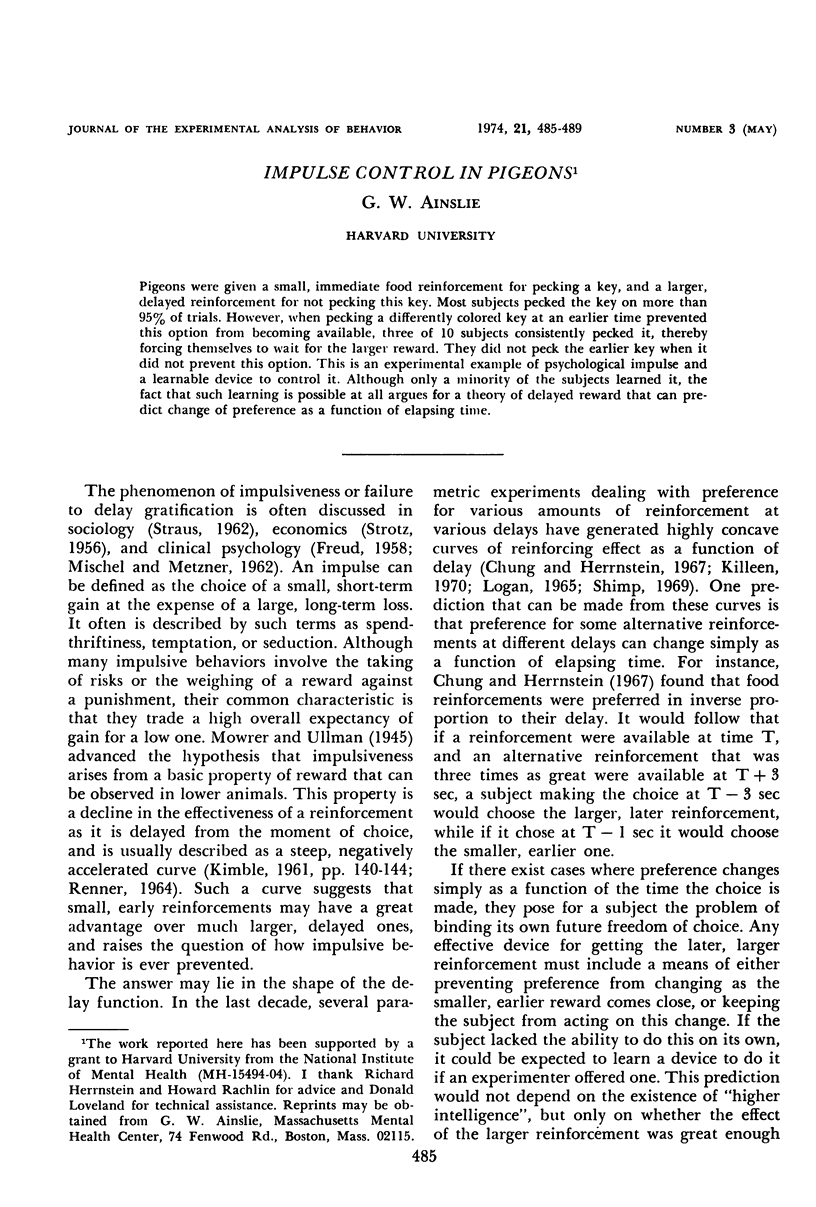
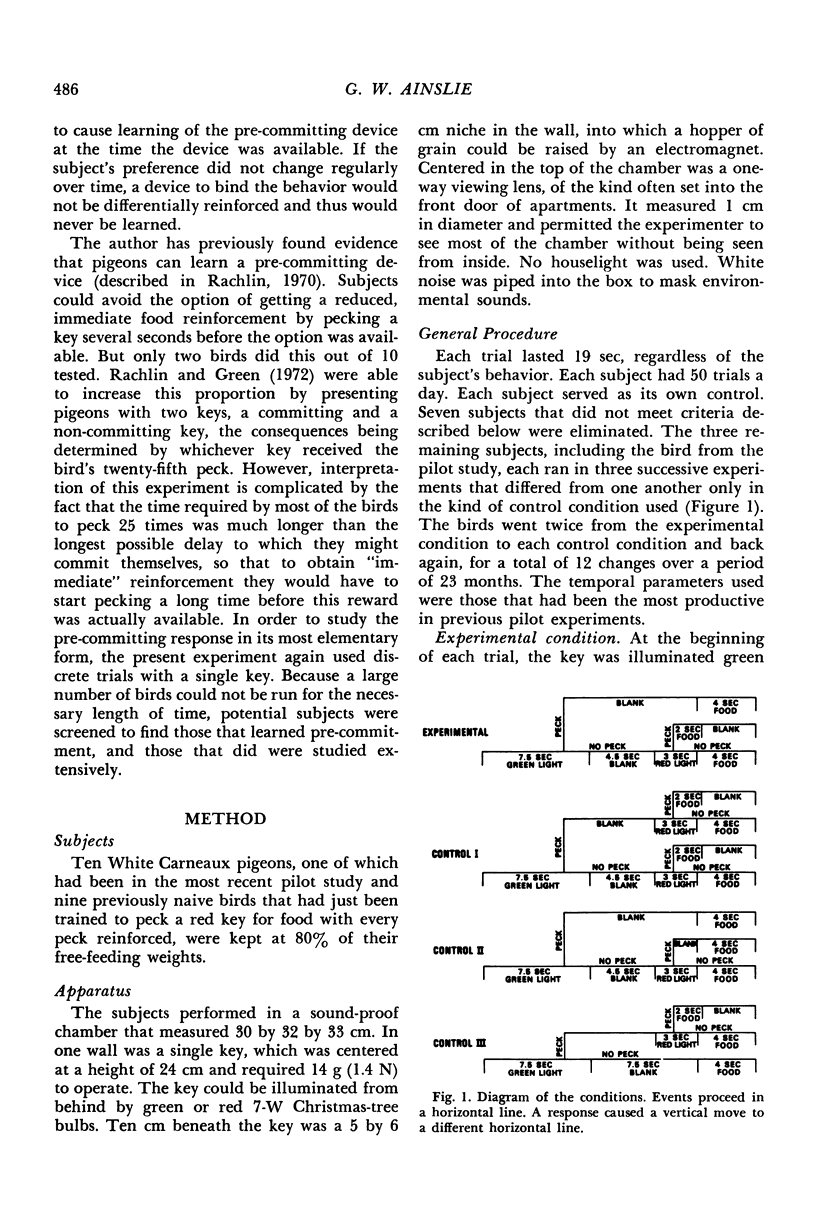
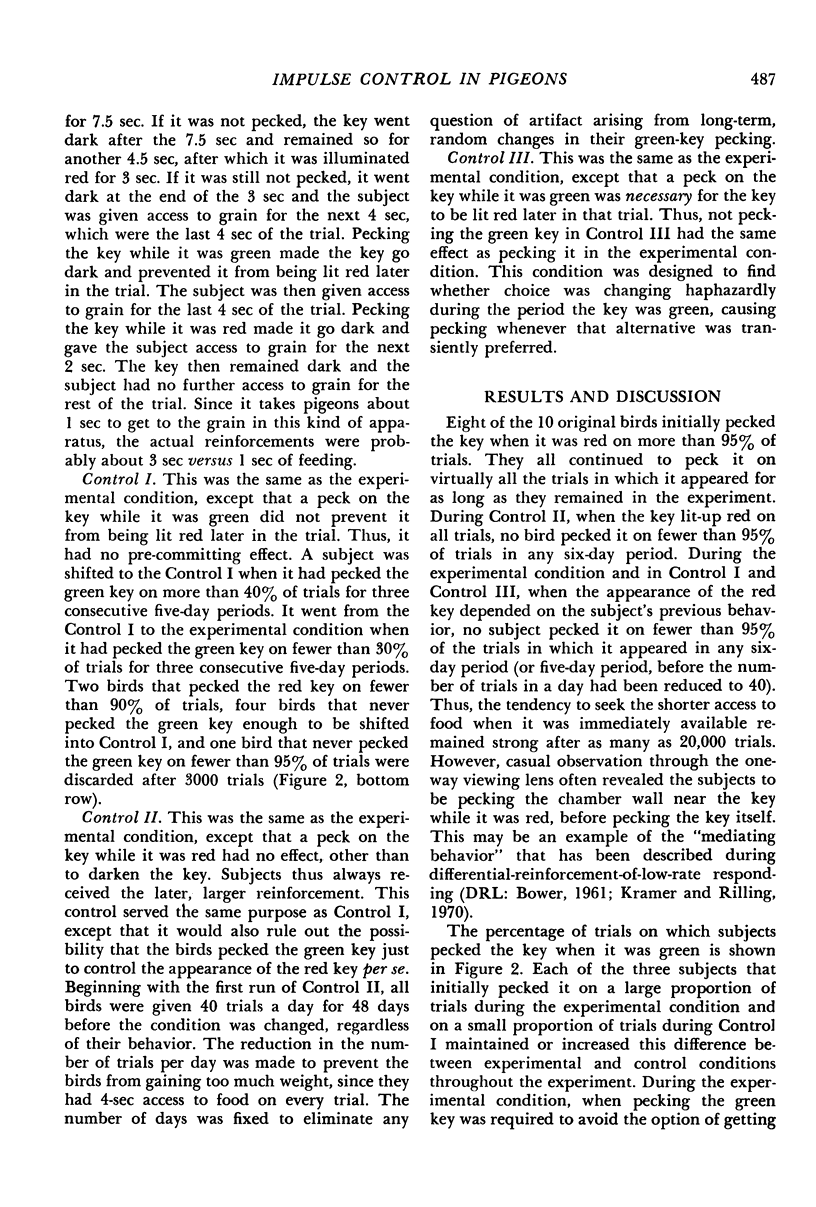
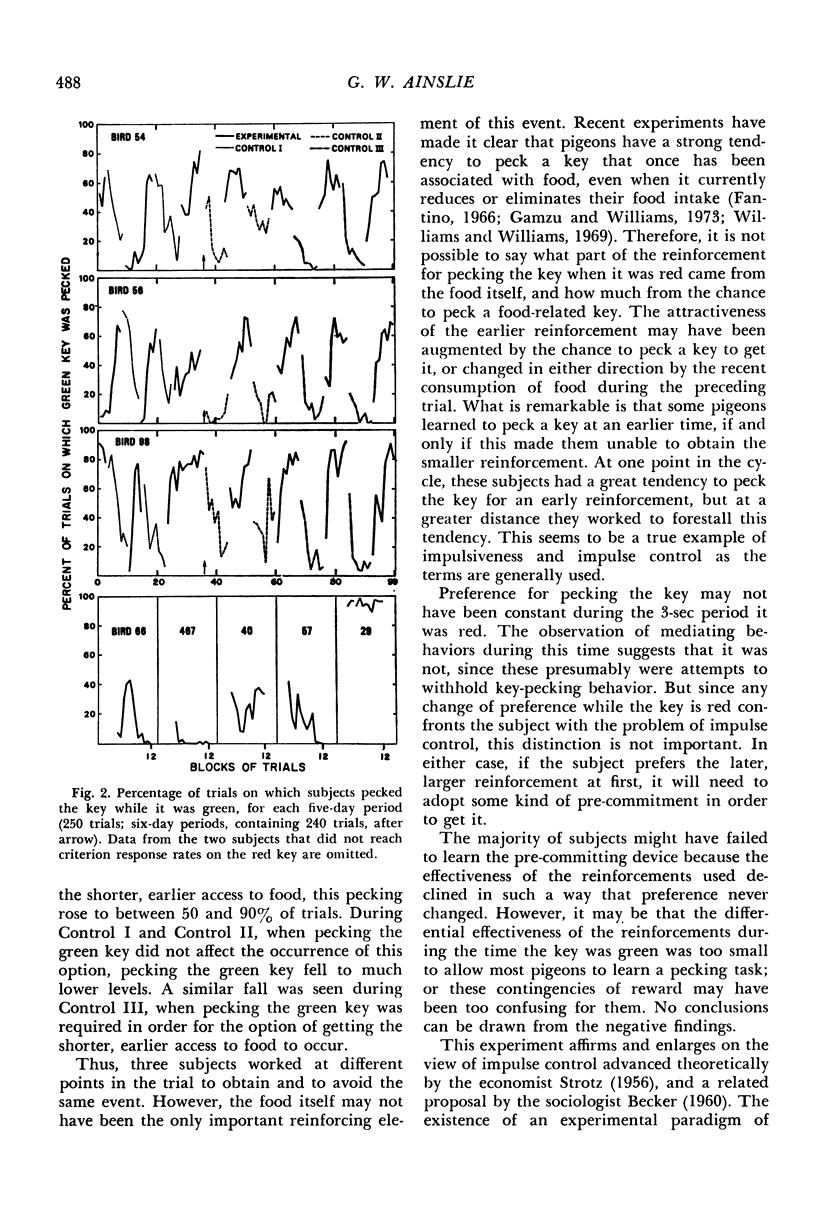
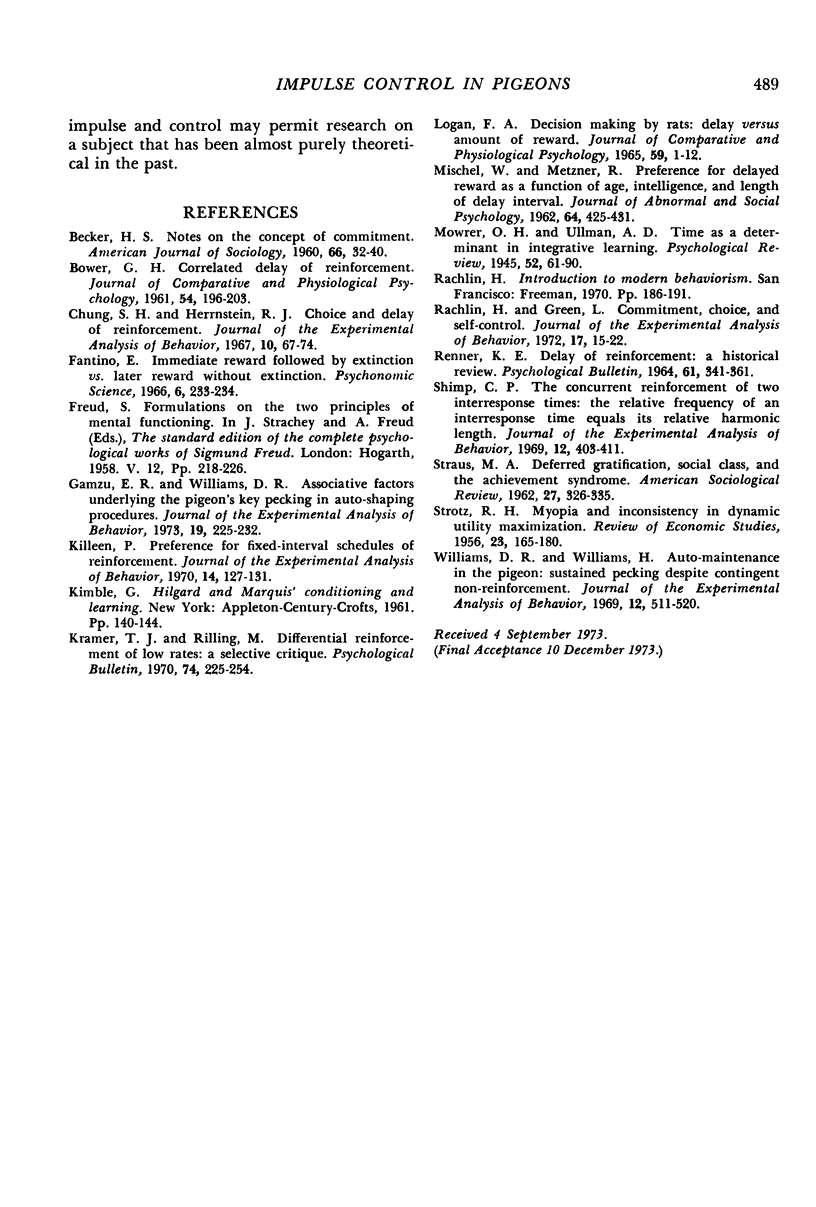
Selected References
These references are in PubMed. This may not be the complete list of references from this article.
- Chung S. H., Herrnstein R. J. Choice and delay of reinforcement. J Exp Anal Behav. 1967 Jan;10(1):67–74. doi: 10.1901/jeab.1967.10-67. [DOI] [PMC free article] [PubMed] [Google Scholar]
- Gamzu E. R., Williams D. R. Associative factors underlying the pigeon's key pecking in auto-shaping procedures. J Exp Anal Behav. 1973 Mar;19(2):225–232. doi: 10.1901/jeab.1973.19-225. [DOI] [PMC free article] [PubMed] [Google Scholar]
- Killeen P. Preference for fixed-interval schedules of reinforcement. J Exp Anal Behav. 1970 Sep;14(2):127–131. doi: 10.1901/jeab.1970.14-127. [DOI] [PMC free article] [PubMed] [Google Scholar]
- LOGAN F. A. DECISION MAKING BY RATS: DELAY VERSUS AMOUNT OF REWARD. J Comp Physiol Psychol. 1965 Feb;59:1–12. doi: 10.1037/h0021633. [DOI] [PubMed] [Google Scholar]
- MISCHEL W., METZNER R. Preference for delayed reward as a function of age, intelligence, and length of delay interval. J Abnorm Soc Psychol. 1962 Jun;64:425–431. doi: 10.1037/h0045046. [DOI] [PubMed] [Google Scholar]
- RENNER K. E. DELAYED OF REINFORCEMENT: A HISTORICAL REVIEW. Psychol Bull. 1964 May;61:341–361. doi: 10.1037/h0048335. [DOI] [PubMed] [Google Scholar]
- Rachlin H., Green L. Commitment, choice and self-control. J Exp Anal Behav. 1972 Jan;17(1):15–22. doi: 10.1901/jeab.1972.17-15. [DOI] [PMC free article] [PubMed] [Google Scholar]
- Shimp C. P. The concurrent reinforcement of two interresponse times: the relative frequency of an interresponse time equals its relative harmonic length. J Exp Anal Behav. 1969 May;12(3):403–411. doi: 10.1901/jeab.1969.12-403. [DOI] [PMC free article] [PubMed] [Google Scholar]
- Williams D. R., Williams H. Auto-maintenance in the pigeon: sustained pecking despite contingent non-reinforcement. J Exp Anal Behav. 1969 Jul;12(4):511–520. doi: 10.1901/jeab.1969.12-511. [DOI] [PMC free article] [PubMed] [Google Scholar]


